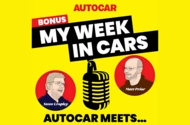What’s Behind Renault’s Surprising Reinvention? A Look Inside the Brand’s Bold New Era
Why Is Renault Suddenly So Cool Again?
If you haven’t checked in on Renault lately, you might be surprised by what’s happening behind the scenes. The French automaker, once seen as a practical but unremarkable choice, is now making waves with a fresh approach that blends nostalgia, lifestyle, and a dash of rock-and-roll spirit. So, what’s changed? And why are people suddenly talking about Renault skateboards and £4000 table football sets?
Let’s dig in.
How Is Renault Redefining the Car Showroom Experience?
Remember when car showrooms were all about shiny floors, rows of vehicles, and a sales pitch you couldn’t escape? Renault’s flipping that script. Their new concept stores—like the flagship in London’s Battersea—are more like urban hangouts than traditional dealerships. Picture this: you walk in, and instead of being greeted by a wall of cars, you find a café, a cozy lounge, and curated merchandise that feels more boutique than car lot.
Arnaud Belloni, Renault’s chief marketing officer, says this is all about creating a “brand touchpoint.” In other words, Renault wants you to experience the brand, not just buy a car. It’s a move that echoes what lifestyle giants like Nike and Apple have done—turning retail spaces into destinations where you can hang out, discover, and connect.
What’s the Deal With Renault Selling Skateboards and Table Football Sets?
Here’s where things get really interesting. Renault isn’t just selling cars anymore. They’re turning their most iconic models—think the Renault 5—into lifestyle products you can wear, play, or even ride. Yes, that includes skateboards and high-end table football sets that cost as much as a used hatchback.
Why? Belloni explains that it’s about building a deeper relationship with fans. When you can buy a Renault-branded skateboard or a designer jacket inspired by the Twingo, you’re not just a customer—you’re part of the story. It’s a strategy that’s worked wonders for brands like Ferrari and Porsche, who’ve long sold everything from watches to bicycles.
And the numbers back it up. According to a 2023 report from McKinsey, lifestyle merchandise can boost brand loyalty by up to 30%—especially among younger consumers who value experiences as much as products.
What Does the Clio Have in Common With Oasis?
Here’s a fun twist: Renault’s marketing is tapping into pop culture in a big way. Belloni draws a parallel between the Renault Clio and the legendary Britpop band Oasis. Both, he says, are icons that defined an era and still spark nostalgia today. By reviving classic models like the 4, 5, and Twingo, Renault is leaning into that emotional connection—reminding people of the cars (and the music) they grew up with.
It’s not just about looking backward, though. These revivals come with modern twists—electric powertrains, bold new designs, and tech that feels right at home in 2024. It’s the best of both worlds: heritage with a future-forward spin.
Why Is Renault Focusing on City Centers and Smaller Spaces?
One of the smartest moves Renault has made is returning to city centers with smaller, more lifestyle-focused showrooms. Instead of sprawling dealerships on the outskirts, they’re popping up in places where people actually live, work, and play. These urban stores aren’t just about selling cars—they’re about building community.
It’s a trend we’re seeing across the industry. According to the European Automobile Manufacturers’ Association, nearly 60% of new car buyers in major cities now prefer to start their journey in a digital or lifestyle-focused space rather than a traditional dealership. Renault’s new stores are designed to meet people where they are—whether they’re grabbing coffee, shopping, or just looking for inspiration.
How Has Renault’s Brand Image Changed Since the ‘80s?
Belloni doesn’t shy away from Renault’s past. He admits that back in the 1980s, Renault was seen as a “nobody brand”—reliable, sure, but hardly exciting. Fast forward to today, and the company is embracing authenticity and storytelling to win respect.
This shift is more than just marketing fluff. It’s about being honest about where the brand has been, and bold about where it’s going. That kind of transparency resonates with modern consumers, who are quick to spot anything that feels fake or forced. In fact, a 2022 Edelman Trust Barometer survey found that 81% of people say trust is a top factor in their buying decisions—more than price or even product features.
What Can Other Brands Learn From Renault’s Approach?
Renault’s reinvention offers a playbook for any brand looking to stay relevant in a fast-changing world. The key takeaways? Don’t be afraid to blend old and new. Make your brand an experience, not just a product. And above all, keep it real—because authenticity is the new currency.
The outcome? A brand that feels fresh, relatable, and genuinely exciting. Renault’s not just selling cars anymore. They’re selling a lifestyle—and people are buying in.
If you’re curious about what the future of car brands looks like, keep an eye on Renault. They’re not just driving change—they’re making it cool.

